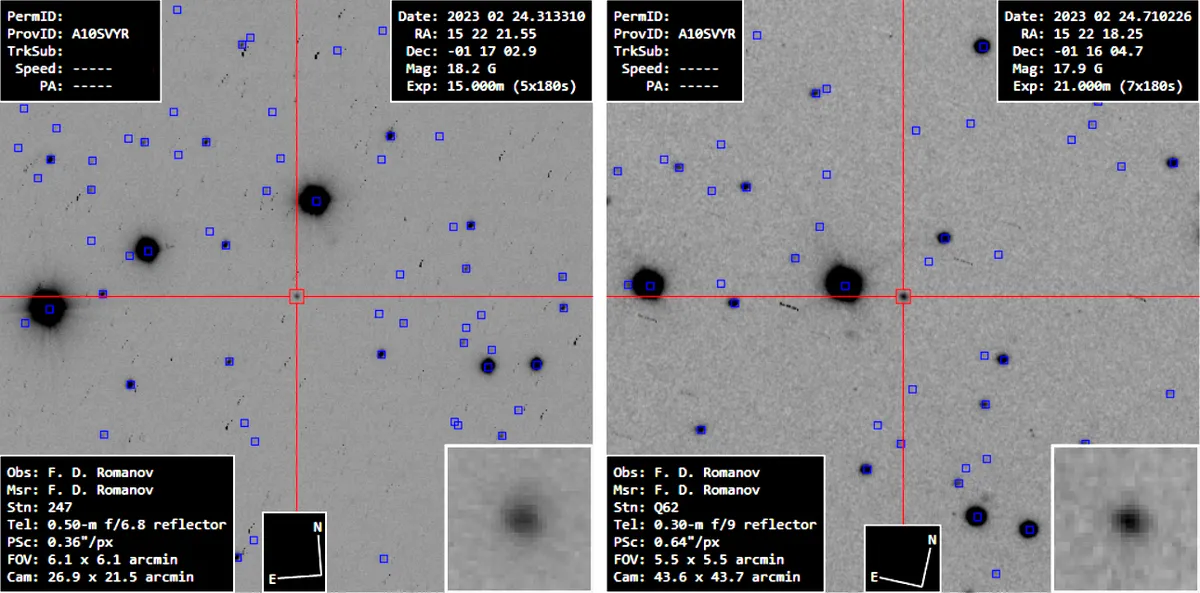Comet P1 Nishimura’s evening show for northern hemisphere observers is now essentially over.
It's the turn of southern hemisphere sky watchers to seek out the comet before it fades from view.
As many seasoned comet observers predicted, when P1 Nishimura rounded the Sun and moved up into the evening sky for northern observers it was nowhere near bright enough to be seen with the naked eye.
Even though it reached its predicted peak magnitude of +2 (and a bit).

How the Comet Nishimura story played out
Comet Nishimura would have been an easy naked-eye object if it had been shining high in a dark sky.
But as it was very low down, its dusty light dimmed by the twilight sky and the haze that lingers above the horizon, Comet P1 was only observed and photographed by a small number of people.
Even the best images only showed it as a fuzzy star with a broad but short fan tail behind it.
The comet is now visible in images being taken by satellites that monitor the Sun, and it shows no signs of disintegrating as some thought it would.
But for northern observers the Comet Nishimura show is definitely over, and the baton has been passed to the southern hemisphere!

Comet Nishimura in the southern hemisphere
Now southern hemisphere observers will get their chance to see Comet Nishimura
For them the comet will be visible low in their evening sky from now on, tracking past Mars.
It will grow fainter each evening as it leaves Earth and the Sun both behind and falls back into the darkness, not to return for more than 400 years.
If you saw P1 – well done! It was certainly a challenge, but anyone who says it was a disappointment is wrong.
It did exactly what the comet experts predicted it would do, even though it never “lit up the sky” or “blazed across the heavens” like the usual suspects claimed it would.
It was a quite beautiful comet photographically, and a lovely sight through telescopes at its best too.
If you didn’t see it, well, don’t feel too bad, there will be other comets along.

Not the end for comet-spotters
There are always comets to see on a clear night, if you know where to look.
The idea that comets are rare visitors to the night sky is completely false.
Bright ones are rare, but a quick look at any astronomy app will show that there are literally dozens of comets available for observation in the night sky on any and every clear night, but most are too faint to see without a telescope.
Read our guide to find out what comets and asteroids are visible tonight.
Upcoming comets to look forward to

So what’s next for comet observers? Well, right now a comet bright enough to be seen with just binoculars is moving through Auriga.
Comet C/103PHartley is shining at magnitude +7 and is visible below Capella, which makes it easy to find.
In early October the comet will move into Gemini, becoming slightly brighter, and by the end of October will move on into Cancer, passing close to the Beehive Cluster.
And after that?
Hopes are still high that in autumn 2024 we might have a naked-eye comet in the sky when comet C/2023 Tsuchinshan-ATLAS is at its best.
But it is still far too soon to make any confident predictions about that, despite what you might hear or read elsewhere about it being 'The Comet Of The Century'.
The hype surrounding this comet is already a bit silly. Like many things in astronomy - we’ll just have to wait and see!
To close our Comet Nishimura coverage (for now), let's marvel at the wonderful image below, captured by Timothy Prosser on the morning of 5 September 2023.
Timothy says: "A number of factors were working against me. First, the comet rose at 3:46 Pacific Daylight Time, and morning twilight started in earnest at 5 AM PDT.
"I was shooting into the light pollution dome of the Tri-Cities of Washington State, the Moon was close by, and I may have also had some high cloud.
"Nonetheless, I was able to get 30 minutes of data for stacking. I was surprised with the result. Considering the raw data, I was amazed by the power of astrophotography processing programs like PixInsight."
Did you manage to see or even photograph Comet Nishimura? Let us know by emailing contactus@skyatnightmagazine.com


